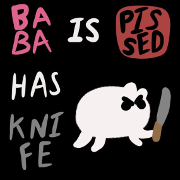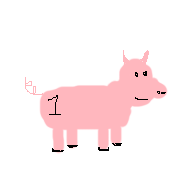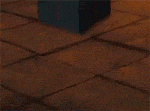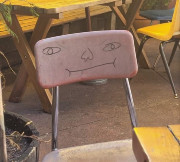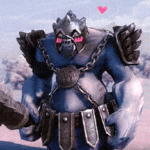|
Let's be honest, you should use that smiley more often. Hello, I'm GAG and recently have been plugging the small questions thread with words about a topic everyone here thinks about a lot: Ants. Unless you're living in an ANTarctic research station, you will know and see them a lot. Even if you do, you will still be victim of the most terrible ant related puns next to the ones about bees. So I study and keep ants. It's a weird and nerdy hobby, but it's a one I do with passion. I've been in the ant business for around 14 years now when I started reading as a teenage, for four years I am keeping ants as pets, my current colony is now one and a half years old. I'm doing professional ant related studies along with colleagues for about three years and if that sounds weird to you, I can tell you it makes great sense, because I didn't even study biology but actually philosophy and am working for a university in that field preparing for the most annoying PhD imaginable, yet I somehow always find myself sleeping on a couch in the biological institute after debating about ants for too long. I may count as weird even for the standards of my actual profession. Anyways, here are my ladies, photo is from last summer. Can't believe how few they were then, it's hundreds now:  The big boss in that picture is what it's all about. That's Brunhilde, named by the posters of my home forum in BYOB, she's my liege and I love and serve her with all of my heart. The ants you see around her are obviously her subjects, the rice they are sitting isn't actually rice, it's baby ants. Little larvae slowly turning into an adult ant while being protected in a complicated cocoon made out of silk they produce themselves. The species is Lasius Niger, or Black Garden Ant. It's not exotic, if you live anywhere on this planet that offers a somewhat temperate climate, I can almost guarantee you can find this exact species either in, on, below or nearby your house. If you don't, well you probably find another ant species that fought those and conquered their territory. Unless if you're Australian, in which case your native ants are most likely aliens from another world, because holy drat what you Aussies got down there is beyond imagination. Both in regards to ants as well as in general. In BYOB I also have a by now huge pet effort post mega thread, that you are welcome to check out for the most nerdiest words you ever could read in comic sans, where I go into a lot of scientific detail which you probably do not expect to see in BYOB, but no worries, I photoshopped hats on most of the ant photos. Also I posted a bunch of times in PI about ants, as you figured, I somehow never can stop talking about them. I even have a gangtag for them, also made by yobbers. If you check that thread you may already see that ants offer an insane variety of lifestyles that I already wrote about, not to mention those I didn't write about yet. There are ants who eat honey and hunt insects, ants who make actual bread out of corn, ants who breed cattle, ants who farm a very specific fungus underground using cellulose and antibacterial chemicals, nomadic ants that are so numerous they could swallow your entire body with millions of them, there are MANY ants who actually and no joke keep slaves, there are also many, many ants who are parasitic and exist as parasites towards other ant species. The family of ants, Formicidae, is one of the most diverse and most adaptive group of animals we know, they existed in their modern form for roughly 200 million years - there are some species that hardly changed since then. Their ability to think as a colony and develop a hivemind and solve even the most complex tasks that even us humans with all of our great brain size we brag about all the time can hardly solve. Ants figured out air conditioning 50 million years ago, they produced insecticides millions of years before the first human learned to stand on two feet and they developed a biological society that exceeds human population in both age, number, ability to adapt and, let's be honest, outlook for the future. If you ever wondered about ants, whether what they do, why they do what they do, why they look like this and not differently, what an ant hivemind is about, how you can get rid of ants invading your home or stealing your picnic and why on earth anyone would ever bother to write so many nerdy words about some insects, ask away. Apart from that latter question, no idea on that one, I may have a problem. Goons Are Gifts fucked around with this message at 17:45 on Mar 25, 2024 |
|
|
|

|
| # ? Apr 20, 2024 04:58 |
|
I cannot wait to see more about this thread, as ants are cool. I have a conflicted relationship though as my only interaction with them in real life is the war: my mom vs the ants in her kitchen. She sets up a poison dish next to the sink every summer when they pop up and I wish we had a way to make them just... leave. We might be messy but not THAT messy Also: while I like watching AntsCanada on youtube, it has been weird watching his videos go from a dude with a camera and a lot of ants to a voiceover using the same format with hyper-clickbait everything. Just show me your ants without all those cuts and weird experiments, dude.
|
|
|
|
I get the feeling the guy never expected the ant channel to take off like it did, his main gig used to be trying to become a social media star in the Philippines. It's too bad, because his old videos wre really informative and he clearly has a passion for the little buggers. Anyways, I'm going to try to dig up some photos I took of giant ant mounds I found hiking in Sweden. What really amazed me is how many I could find in a relatively small area. They really seem to love the sparse forests in Scandinavia where there isn't a lot of ground cover.
|
|
|
|
Replying to this from the small/stupid questions megathread:Goons Are Great posted:Oh I love Formica Rufa, wait, I have this gif of them doing their venom spraying comedy bit, where is it I actually went from writing the post you respond to here to your BYOB thread to read more about ants and just read the post with that image before seeing this post. That whole millions of ants on the same day thing is super cool and now I'm gonna go outside and look for flying ant swarms.
|
|
|
|
StrixNebulosa posted:I cannot wait to see more about this thread, as ants are cool. I have a conflicted relationship though as my only interaction with them in real life is the war: my mom vs the ants in her kitchen. She sets up a poison dish next to the sink every summer when they pop up and I wish we had a way to make them just... leave. We might be messy but not THAT messy That food poison they put into honey gets eaten by the ants, carried into their nest via their social stomach and spread over the entire colony to kill the nest. So far, that is what we want. What we don't want but what inevitably happens is when poisoned or dead ants are eaten by hedgehogs, birds, other insects, that then also get poisoned. Those things tend to be stuck in the food net for quite a long time and they can hurt entire insect populations nearby, which in return hurts bird and mammal populations, too. There are some more peaceful solutions to ants coming into a kitchen than poison, also some that have longer lasting effect than killing a nest, and also in some areas of the world we should just expect it to happen and be fine with it, unless it turns into an actual problem. It's not like anyone would start spraying poison all over a house because there were two flies chilling on a counter. The same should go for a low number (!) of scouting ants. Also yeah, AC turned into an annoying shitshow where he does things to his pets just to generate clicks and post the most annoying titles imaginable. He really knows his poo poo and should focus on that, it's such a great topic to make videos about, but sadly he chose to go another way and focus on making money with it, no matter how.
|
|
|
|
Ants are so successful in Australia that plants are adapting to use them as part of their pollination cycle. https://www.abc.net.au/news/2020-06-19/unique-wa-plants-adapt-to-allow-for-ant-pollination/12350088
|
|
|
|
You mentioned ant hibernation in your answer to me in the small questions thread, tell me about ant hibernation because I didn’t know they did that. I thought they just died off and new ants emerged in the spring. Also I grew up in the UK and I well remember ‘flying ant day’ each year.
|
|
|
|
We haven't had any ants in the kitchen so far this year, if/when they pop up I'll pay closer attention to what my mom does and pass along your information. Happily I see big black ants back out on the porch - just one or two scouting - and it's like "hi guy, go back outside" and it's nice to know that they're busy in our yard doing their part.
|
|
|
|
Couldn't find my old photos so instead let me introduce The Nuclear Ant Bunker. An ant colony built above a hole in the roof of an abandoned bunker led to millions of ants falling into a pit that they couldn't climb out of. Instead, they established a parallel, queen-less society consisting of only worker ants. Hundreds of thousands of ants at any given time somehow surviving despite having no way to procreate and no source of food. Turns out they subsisted on cannibalism and new ants falling into the same trap.
|
|
|
|
Helith posted:You mentioned ant hibernation in your answer to me in the small questions thread, tell me about ant hibernation because I didn’t know they did that. I thought they just died off and new ants emerged in the spring. Ah yes, ant hibernation. Many people believe eusocial species in particular or simply most insects die out each year and come back in spring, but that's almost entirely only a thing for wasps. Even bees sleep over the winter. For hibernation purposes there are practically just two kinds of ants: Those that have to do it and those that are incapable of doing it. Those who have to do it, really have to do so, even if they are inside and it stays warm. Those who are incapable of doing it live in hot areas of the world, where the temperature never goes below ~8°C (disregarding a short spike for a few hours). Their entire body and energy system is made around whether or not they have to hibernate during winter and it greatly affects their social structure, ability to reproduce, speed of growth and ability to survive harsh months. For exotic ants this is an easy deal: You never pause, you never sleep, you are always active. If it's cold, you stay in the nest more often, you cuddle with your buddies and this way you stay warm (of course as with all insects, ants are unable to produce heat from their bodies like mammals do), but you continue to thrive, maybe at a lower speed. In order to make this possible, you food intake has to be absolutely immense. The food requirements for a growing ant colony is by far greater than their biomass implies, they need to hunt, collect and eat constantly. Day, night, warm, cold, doesn't matter, they're out there collecting food. The result is the greatest success in ant biology: Multiple nuptial flights throughout the year, top speed reproduction cycles (the most extreme case has from an egg to adult ant in one week, for my ant species this takes 2 months), being able to adapt to new development in a matter of days, sometimes hours. Some species, like the genus Atta, developed highly complicated mechanism to always have food around even if there's no insects to be found, by cutting down leaves of plants and feeding it to a fungus they plant and keep in the nest and then feed off the fungus. Those are the ants many of you American friends probably know and see a lot, they are extremely successful. For non-exotic ants, this is fundamentally different. You have roughly 7 to 8 months of activity, as when the temperature drops below 8°C, you can no longer be active. Other insects disappear, bees no longer carry around honey that you can steal, aphids die off so you can't suck on their asses (literally) for sweet juice. In short, as soon as it goes cold, going on as before is impossible. To survive anyways, the ants restructured their entire rhythm throughout the year: A queen gets pregnant around July, when it's hot. She starts building a colony immediately afterwards, it takes around two months until the first babies that she produces out of eating her own muscles hatch, meaning it's September/October. Around october, she automatically and without influence from the temperature will stop laying eggs, the usually very small colony (around 2 to 5 ants) spend all energy they have to collect food and make sure everyone is well-fed. Then, at the start of November, they seal off their nest with soil or wood or whatever they find, leave the eggs be and kill and eat the larvae and pupae and go to sleep. No activity at all, at least until February. Then, they start scheduling a single guard, a single ant that sits on the entrance of the nest and has to stay awake, they swap that guard out twice a day. It is supposed to warn the sleeping ants if another animal that already is active again comes in, also it continuously checks the temperature. At the end of February until mid march, when the temperature slowly rises to above 10°C for a few hours a day, they careful start scouting again, collect any food they can find and slowly regenerate the resources they lost during winter. As soon as it stays warm for a while, they go back to their business, feed the queen back up and she starts producing eggs around April again. She now has time until October to produce as many ants as possible to be safe for the next winter. She will never create alates (males and new queens) in that first year, as it is too risky, she focuses on nothing but new worker ants to grow the nest as quickly as possible. As soon as October comes around again, the cycle repeats and everyone goes back to sleep, now with more ants than before - and they have no moral obligation not to kill and eat a dead or sick ant if it's necessary, including their babies - and just in the second year, if all goes well, the colony is big and strong enough to start producing alates and spread the genome. 90% of those queens never make it to their first winter and even 80% of the founded and functioning nests do not survive the first year due to this cycle. Afterwards - and those are the ants you usually see - the nest is usually very successful and can stay around until the queen dies. If it's a species that supports more than one queen (we call this polygynous, monogynous for single queens), that colony is virtually immortal and will continue this cycle endlessly. There are colonies in the world that are believed to be hundreds of years old. That's what they do. They trade in the ability to feed all the time for sustainability and the ability to live in cool to extremely cold areas.
|
|
|
|
Man with Hat posted:That whole millions of ants on the same day thing is super cool and now I'm gonna go outside and look for flying ant swarms. Saw no flying ants but took some ant pictures! I saw some ant houses:  This is a small one at the start of my walk.   These two are the same hill from two directions. They found a good spot with cover from the elements!    This one was loving huge and I'm pretty sure goes straight through the roots of that fallen tree. It was hard to get a picture but the whole thing is on another, lower, but much wider rise in the wood floor that was also filled with them. The whole thing must have been like 3 meters in diameter and the constructed anthill was also really big. https://i.imgur.com/16GTcFQ.mp4 Here are two ants being very helpfil to each other. The third one you can see running away was helping too at first but I guess it was a bad friend and gave up. Rude.
|
|
|
|
Ants really are awesome. I love watching them work, as long as it's not in my kitchen (they're rarely in my kitchen, fortunately). OP, did you ever play SimAnt? If so, thoughts? The manual for that game was two-thirds ant encyclopedia, and is where I learned almost everything I know about ants.
|
|
|
|
There are two ant games that I know of: SimAnt and Empires of the Undergrowth. I haven't played it yet but it has a demo.
|
|
|
|
I have never played SimAnt because that came out before I was born actually, but I did buy Empires of the Undergrowth just five minutes ago after reading about it and seeing a goon talking about what it is, I am very pumped to play it and see if it's cool and whether they are biologically correct! (they are not, because they portray Leafcutter Ants as one species with many castes, which is untrue, it's an entire genus - Atta - and their caste variation internally and externally is way less extreme). I need to see if my old rear end computer can run it though. 
|
|
|
|
Goons Are Great posted:I have never played SimAnt because that came out before I was born actually, but I did buy Empires of the Undergrowth just five minutes ago after reading about it and seeing a goon talking about what it is, I am very pumped to play it and see if it's cool and whether they are biologically correct! (they are not, because they portray Leafcutter Ants as one species with many castes, which is untrue, it's an entire genus - Atta - and their caste variation internally and externally is way less extreme). gently caress that noise, find sim ant instead, it's awesome.
|
|
|
|
I just want to say that my internet is hella slow so it looked like Brunhilde covered a flesh patch that looked like a hand. I showed it to my spouse, being all, "Look, that is a queen ant in some dude's hand!" and they were really grossed out and then wanted to see it. The picture had loaded by then and, well, I got owned pretty hard. I wanted to share because you had a part in that.
|
|
|
|
StrixNebulosa posted:There are two ant games that I know of: SimAnt and Empires of the Undergrowth. I haven't played it yet but it has a demo. There was another game called Empire of the Ants, based on the book, which I recommend everyone read. It's like Watership Down but with ants. If I remember right... I can't find an image of it, but my old City of Heroes character was called The Yellow Ant, a reference absolutely zero people got. (It was a SimAnt reference  ) )
|
|
|
|
Sim ANt
|
|
|
|
Fruits of the sea posted:Couldn't find my old photos so instead let me introduce The Nuclear Ant Bunker. Thankfully the Polish Scientists put in an escape plank for the ants! 
|
|
|
|
Why do they swarm on the sidewalk in front of my house? Every once in a while there are a few thousand running around there.
|
|
|
|
sullat posted:Why do they swarm on the sidewalk in front of my house? Every once in a while there are a few thousand running around there. Hard to tell. Ants swarm for various reasons, the most likely ones are them having food around leading to the construction of ant roads where they carry the stuff back home, or them hunting together. Most ant species will hardly care for the size of the prey, as long as they have enough numbers to have a good chance of moving it or parts of it, so as soon as something big and edible comes around, they'll start to swarm. Ant scouts detect such things, go while spraying a trail of pheromones and then recruiting ants from the nest to follow them back to the source. Another likely reason is other ants. When ants are neither scouting nor hunting nor gathering food, they are usually in a war with other ants that live nearby As the drums of war trigger the majority of ants to leave the nest and fight for the colony, this results in huge rear end battles with many swarms of ants trying to outnumber each other. Usually ends with devastating losses on both sides and no real winner, but if someone does win the losing colony gets eaten if not evacuated quickly enough. Ants have a biological and genetic motivation to die for the safety of the own colony and to keep their own genome alive, which is why they won't care for massive losses even against the exact same ant species. There are some exceptions to this where two unrelated colonies can merge to one mega colony and how that happens is largely a mystery, but the usual status quo for all feral ant colonies is a constant state of war with other ants.
|
|
|
|
I have ants that live in my garden and my flower boxes. For several years now they have been content to live there, but this year all the flowers in the one box they live in have died. What causes this, and do I need to remove the colony to grow flowers there?
|
|
|
|
Gophermaster posted:I have ants that live in my garden and my flower boxes. For several years now they have been content to live there, but this year all the flowers in the one box they live in have died. What causes this, and do I need to remove the colony to grow flowers there? Unlikely that they have something to do with that. Adult ants are in general unable to eat solid food and cannot process cellulose in anyway, so they wouldn't eat them or dig out the roots or something like that. Leafcutter ants might cut them down, but usually they stick to plants that produce more stuff than flowers and even then you should see the cuts first, they wouldn't just die. Now, it might be possible that they tried to breed aphids on the flowers, a lot of ant species do that. They collect them from elsewhere, place them on plants nearby the nest, protect and breed them, so they suck out the plants and the ants suck up the plant poop the aphids produce naturally. This can cause entire gardens to die slowly, but you would be able to spot the aphid farms easily weeks before that happens. Also, usually the ants replant new stuff there and carry the aphids over to keep them going, so it shouldn't just die, but sometimes they don't control their cattle well enough, causing them to burn through the plants. I'd say try again and keep an eye on the plants for aphids or wounds of any kind, but it might as well be that other insects or any kind of plant disease caused them to die. Removing the colony would only solve it if the ants definitely are the problem there and if they are not, it's actually more dangerous as the ants usually keep plants nearby the nest intact and protect them against bugs etc. in order to not lose the cover and safety.
|
|
|
|
Goons Are Great posted:...there are also many, many ants who are parasitic and exist as parasites towards other ant species... Wait, what? Really?
|
|
|
|
Thanatosian posted:Wait, what? Really? Oh yes! This is called social parasitism and is incredibly complex and as old as eusocialitiy. There is no biological realm where parasites do not exist, as they are as old as life itself. Basically there are three strategies involved: In Strategy 1, violence, a pregnant queen enters an existing ant colony, disguised as a normal worker, and compels via pheromones or forces via violence the actual colony workers to leave her be, kill the existing queen ant and start laying eggs, who as soon as they hatch fight the other workers, steal their food and forcefully takeover the colony. In strategy 2, fraud, a pregnant queen disguises herself as another queen of the same colony and sneaks in. She lives next to the other queen and acts like her, but spreads a pheromone that makes her more appealing to serve than the actual queen, until the latter will die off starvation and in general being neglected, or the existing workers even kill their own original mommy to serve the parasite. The parasite lays eggs constantly and gets them raised by the victim workers, until they grow up, outnumber the original (obviously not anymore growing) worker population and take over the entire colony by killing the remaining victim ants. A Strategy 3, true parasitism, is the most complex and brutal one and only accessible for a few very special ant species. Those species are lacking a worker caste all together, they are exclusively made out of queens and males, nothing else will ever be born. A pregnant queen is able to become virtually invisible for the victim ants via extremely complex pheromones and just walks into the victim colony. She searches for the or one of the existing queens and hooks herself up to her back, pushing her onto the ground and hindering her movement. Via chemicals she forces the workers to feed and take care of her, always making sure the original queen is staying out of the picture, but always still alive. She then can start laying eggs for baby queens and males which get taken care of by the existing workers and spread her genome that way. The males will meet with new queens and the cycle repeats itself. Those parasitic queens no longer have legs or even a mouth, they can only move for a certain time by crawling like a worm and will stay on the back of the victim for the rest of their lives. They are so successful at being parasites that they were able to reduce almost all functions that enable them to take care of themselves and require a host to survive. I made a more detailed post about social parasites in my byob thread, feel free to check it out if you want to be scared what nature can evolve to and for some nasty pictures of an ant species so parasitic that they are unable to exist without their hosts: https://forums.somethingawful.com/showthread.php?threadid=3886441&pagenumber=5&perpage=40#post494310981
|
|
|
Goons Are Great posted:Oh yes! This is called social parasitism and is incredibly complex and as old as eusocialitiy. There is no biological realm where parasites do not exist, as they are as old as life itself. In strategy 1 and 2 why then kill off the remaining workers? If they're already serving the parasitic queen why not keep them around indefinitely? Also how effective are those chemicals? What's the chance they're detected or it doesn't work?
|
|
|
|
|
 Count the legs  Those aren't antennae  These are spiders of the genus Myrmarachne which mimic ants.
|
|
|
|
Goons Are Great posted:Strategy 3, true parasitism, is the most complex and brutal one and only accessible for a few very special ant species. Those species are lacking a worker caste all together, they are exclusively made out of queens and males, nothing else will ever be born.
|
|
|
|
Carillon posted:In strategy 1 and 2 why then kill off the remaining workers? If they're already serving the parasitic queen why not keep them around indefinitely? Especially in strategy 1, which is the most common and least developed one, it's not a clean cut. Sometimes a parasitic queen isn't able to mimic the required nest smell (it's the only way for ants to determine whether or not another ant is related) at all, many species have no organs for this. They just kill the first host worker they see, bath in their blood (hemolymph actually, ants like all insects have no blood) and try to disguise their actual smell by appearing somewhat neutral, or they even cover their body with host worker ants to do so. Sometimes this still doesn't work and the queen, using her stronger mandibles, naturally armored exoskeleton and generally much bigger size, and goes on a killing spree among the host. They kill every ant they see until they reach the queen and kill her, too. This confuses the host colony entirely, as they find a queen which smells queen-like, but obviously isn't her queen, so they ignore her or at least don't help her, and they in general don't get a coordinated attack organized to get rid of her. Those kinds of social parasites are highly violent and adaptable and any kind of worker that comes too close to them gets killed, which simply ignites fear among the ants who don't get what's up. In general, temporary social parasites kill the remaining host workers just as a safety measure. There always is some faction among the hosts that seem to see through the disguise, the parasitic queen gets attacked quite often and you also don't want to risk a single host worker ant realizing she's been tricked and starts to go on a killing spree among your helpless brood. A single worker ant could easily destroy hundreds of parasitic eggs, so it's safer to remove the host entirely as soon as possible and live on your own ones. The effectiveness of those chemicals are highly variable. This kind of takeover rarely works, easily 90% of parasite queens don't make it to a suitable host nest and replacing a queen without being killed. Even if they do, the first few days are very dangerous, many queens still get killed then, leaving the nest entirely vacant of any queen which dooms them to die out. The way ants use pheromones is a highly researched but still hardly understood topic, we don't even understand the concept of nest smell as the chemicals used are evidently the same, yet an ant can distinguish between colonies even if another ant she met is from the same mother but living in another colony. Somehow every colony has their very own specific smell and mimicking that is very tough. The only ant species so far that is close to a 100% success rate, equally unknown how the hell that's possible given the complexity of every pheromone, is Tetramorium inquilinum, the one without legs and a proper mouth. Those guy land nearby a host nest and are pretty much always accepted as new queen the second they do that. They don't even need to find the host queen, the workers carry them to her and hook her up. It's a mystery how anything can be so successful in tricking thousands of individuals via a smell, but we do know that those queens have a very special and massively expanded pheromone apparatus in their gaster with which they accomplish that. One theory is that they don't actually trick the ants, but produce something similar to an air born drug that causes the ants to thirst for that smell and they just fall for the parasite due to being obsessed with that smell, but it's just a theory. If, for those guys, this trick doesn't work, which is rare but it does happen, the parasite queen is doomed to starve to death outside the chosen colony. The fact that a species like that was able to adapt like this is evidence for their tremendous and statistically impossible success. Goons Are Gifts fucked around with this message at 00:39 on Jul 8, 2020 |
|
|
|
Man that parasite stuff is creepy. I had an ant colony on my balcony for years, they were nesting in the flowerboxes seemingly being sort of semi-nomadic, I'd often see them carrying brood around. They never came inside so it was just insanely cool to watch them. Only this year they seem to have hosed up their aphid herding, all the plants they chose died within days, absolutely black with aphids, and eventually one day they did come inside. Their pathfinding seems to be a bit weird, they went the long way around across the wall to the kitchen window rather than just through the balcony door, but they just covered everything inside and we had to kill them with that poison stuff. They basically disappeared within two days but I still find the occasional worker wandering around in odd places sorta going through the motions, but no more organized activity or ant highways. Really sad.
|
|
|
|
The Mighty Moltres posted:These are spiders of the genus Myrmarachne which mimic ants. the FEAR that rocketed through me when I realized they weren't ants god I can handle ants just fine but stick an extra pair of legs on and AAAAAAAAAAAAAAAAAAa e: https://antwiki.org/wiki/Ant-Mimicking_Spiders I'm fascinated by these things but there's terror running through my body just looking. Why is fear like this? Ugh. StrixNebulosa fucked around with this message at 02:36 on Jul 10, 2020 |
|
|
|
The magical time of the year is here, in Europe and the temperate regions of America and Asia! If you live in those regions, very broadly everything north of the 40th parallel, which is i think roughly north of Wyoming and of course the respective states around that line of latitude for the US, North of Central Italy in Europe and Northern turkey and Northern China for Asia, you can now bear witness to this magical time of the year and observe ants from many species doing sex and founding new kingdoms all over the place! It's of course not globally synchronized and depends on the weather, but from now on until maybe mid August alate ants, the winged sexual individuals from the respective species will leave their home nest and fly out to mate with an average of 12 to 15 lovers in mid air. It is the most exciting, most dangerous and most complicated time for every queen ant and it's the only active time for all male ants before they inevitably die due to the fatal wounds they will suffer from mating. The queens were never prepared for this, they had no training, they never used their wings ever before, they have no idea what wind or rain is and they will fly up to 20km to meet with distant males and mix up their genomes healthily. Most queens will not survive this journey, by far more than 90 to 95% will die, but those who can make it have the unique chance to form a new ant kingdom that can last for up to 20 years for monogynous species or practically endless for polygynous ones. I already met some fresh queens today at the train station:   Presumably garden ants, one of them still winged, both fresh queens that probably had sex just today, as you can see from their incredibly The winged ones are either resting and haven't had sex yet, the unwinged ones are definitely done with their duty and carry massive amounts of sperm inside a special organ called the spermatheca, in which they will store the semen of the many males they hosed today for the rest of their lives. Once they broke off their wings, they will start looking for a suitable small hole somewhere, or dig one, to hide in. Afterwards all evolutionary speaking "modern" queens will seal the hole and start eating their own wing muscles that they no longer need to gain proteins from which, over the coming few days, they will construct little eggs. The less evolved species still have more independence during the founding phase, where the queen will do the same but also leave the nest from time to time to hunt - a dangerous endeavor. If you ever wanted to setup an ant farm on your own, this is now your chance! Queens are easy to spot and collect, just keep an eye on weirdly looking winged or non-winged bugs. You can easily spot them due to their unusual size compared to the wings, the (for most insects you see outside currently) unusually long body, very obvious abdomen (belly and butt) or simply because they look like large ants. Feel free to post photos of queens you meet currently itt, I'm very eager to see many of them. If you do want to collect one to setup your very own ant farm, I can write up a few tips to get started if anyone is interested, but make sure to check your local regulations as some species are endangered and protected (especially in Europe) and you could get into legal trouble for collecting them. If you do it right, however, no harm would be done and you could release them again afterwards with no problems. Most specie however are fine and you can collect them freely, just don't arbitrarily try to kill them and be nice, those girls are having the most important and most difficult time of their life. I'll collect a few queens carefully and will offer them a safe home until they are ready to be released in the wilderness again in autumn, just as I did last year. You can read my posts on those in my byob thread, too, probably gonna post about it again this time. ANTS!!!
|
|
|
|
Note that setting up an ant farm is super easy, involves practically no investment at all and if you take queens that are mating currently at your location, you can release them again if you find out keeping ants is not for you with practically zero consequences whatsoever for you or the ants. It is, however, still a living animal that requires occasional care, interest and love from you as a keeper, ant colonies can grow very old, and it comes along with the necessity to deal with them needing food, water and space. The setup is very easy and can easily be seen as a trial period for you to see if you want to get into it. Local ant species can be released back into the wild at any time.
|
|
|
|
Hey, Goons Are Great, when I was outside in Nippes a couple of hours ago, the streets were absolutely overflowing with ant queens. Like seriously at least one every two meters, for all of the 2 km of my walk. I had seen one (1) ant queen before in my life, so I kinda knew what I was looking at, but the insane amount of them made me doubt myself. So I asked a question about it offsite, and aphid_licker linked me to this thread. And, what a weird coincidence! So yeah, for Cologne at least, I can confirm that it's firmly in the BONE ZONE (if you're an ant).
|
|
|
|
Goons Are Great posted:The only ant species so far that is close to a 100% success rate, equally unknown how the hell that's possible given the complexity of every pheromone, is Tetramorium inquilinum, the one without legs and a proper mouth. Those guy land nearby a host nest and are pretty much always accepted as new queen the second they do that. They don't even need to find the host queen, the workers carry them to her and hook her up. It's a mystery how anything can be so successful in tricking thousands of individuals via a smell, but we do know that those queens have a very special and massively expanded pheromone apparatus in their gaster with which they accomplish that. One theory is that they don't actually trick the ants, but produce something similar to an air born drug that causes the ants to thirst for that smell and they just fall for the parasite due to being obsessed with that smell, but it's just a theory. this makes me think that there is some not-yet-understood benefit to the host species to having a parasite queen hanging around. The distinction between parasitism and symbiosis is extremely fuzzy, generally speaking. Of course it could just be that it is true pure parasitism and the parasite species just has the temporary upper hand in the genetic arms race, and things will be a little less lopsided in a few hundred or thousand generations. Or maybe the parasite itself will evolve a benefit to the host colony and the relationship will become symbiotic. Exciting stuff, either way.
|
|
|
|
Smirr posted:Hey, Goons Are Great, when I was outside in Nippes a couple of hours ago, the streets were absolutely overflowing with ant queens. Like seriously at least one every two meters, for all of the 2 km of my walk. I had seen one (1) ant queen before in my life, so I kinda knew what I was looking at, but the insane amount of them made me doubt myself. So I asked a question about it offsite, and aphid_licker linked me to this thread. And, what a weird coincidence! So yeah, for Cologne at least, I can confirm that it's firmly in the BONE ZONE (if you're an ant). Oh hell yeah I filmed these ladies up there at the Hauptbahnhof, the reason I made this post today was because I observed that several local genera, especially Lasius, is having nuptial flight today and those ants you saw are most likely Lasius, too! They are super numerous and successful here and almost every year they and a few smaller genera are the starting point for nuptial flight season in Western and Central Europe, so that's super exciting and I can't wait to find more ant species at the Dom and around my house and everywhere. cheetah7071 posted:this makes me think that there is some not-yet-understood benefit to the host species to having a parasite queen hanging around. The distinction between parasitism and symbiosis is extremely fuzzy, generally speaking. Given that in this strategy the host colony does not die out and "only" suffers the physical damage the parasite inflicts on the host queen plus the resources she steals for herself, it is quite possible that those colonies in some way are more successful than others. The parasite will not allow the host queen to die and the ants that are tricked into submission are known to be more active and eager to serve her queen, which is not the usual way these things go down. Perhaps there is more stuff happening underneath that made the co-evolution between host and parasite beneficial for both species.
|
|
|
|
My sister in Bristol, UK posted on facebook on Sunday that they'd had to evacuate from the garden because it was Flying Ant Day there.
|
|
|
|
I loving love ant facts and will be following this thread closely A couple ant questions I had: So my understanding is that if you kill an ant, that releases pheromones that make all the other ants go nuts, and this is why if you poke an anthill with a stick or whatever they all come swarming out. But the violent parasite queens kill ants and bathe in their fluids, wouldn't this send the ant colony into a frenzy, instead of making them believe the queen is one of their own? Or is my understanding of this wildly misinformed from some dumb poo poo I read as a kid? How exactly do ant colonies detect when they're under attack? Also, I dunno if you can help me with this one, but when I was a kid on family trips to Thailand, I have very distinct memories of the ants there. They were red ants (not quite as bright as fire ants I don't think, but similar), and about the same tiny size as the ants I've otherwise always been familiar with, except they seemed to have a second caste of worker ant that was way larger than the others, maybe 3-5x as much. I remember those guys very well because their bites would hurt like hell. There wasn't anything particularly different about them vs the other ants outside of their much larger size (I think their mandibles would've been disproportionately large as well?). I think instead of grainy ant hills their nests were more solid, like they'd been constructed out of mud, but I'm not so sure my memory isn't lying to me on that one. Would you happen to know what species these ants could've been? Now that I'm an adult and have an interest in ants outside of waging child war, I'd really like to know if there was anything particularly notable about the ants that gave me so much grief as a child, but a couple quick googles has not helped me identify them. If it helps, it would've been in northern-central thailand (rural village between Bangkok and phichit, much closer to phichit than bangkok)
|
|
|
|
ninjewtsu posted:I loving love ant facts and will be following this thread closely Ah, well it's not as automated as it seems. Spraying pheromones is always an active process, not a passive one and so ants don't explode in alarm pheromones the second they die. Even if they would, ants do not immediately go into a frenzy when they smell it, they investigate first and only if more ants also release the same pheromones it starts to get interesting - ants smell extremely well, way better than dogs and other mammals, and intensity is key. If you poke an ant nest, one or a few ants notice and come out and if they see a threat, they will immediately release alarm pheromones from their butt and send out alarm sounds via ultrasound (most ant species also can do that by the way, even though ants do not have ears but specialized organs for it) and quickly move back and forth in a small area that they go over multiple times in a matter of one or two seconds due to their speed. When they do that, this area gets covered in pheromones and everytime they walk over the same spot again, the smell intensifies. If you do that with multiple ants, it doesn't take more than three seconds than have a certain area basically stinking like alarm, which gets noticed by even more ants causing an even stronger smell. That's how alarm happens and that's also why ants keep on marching and patrolling around the nest for minutes after the threat has left in what seems to be panic (it's not fear, it's rather anger) as they try to cover as much ground as possible to find what caused the alarm. They need to do that because pheromones are very effective in communication, but not very detailed. There is no "There is a giant piece of wood attacking" pheromone, there's only a "We're under attack by non-prey" one. That plus hearing ants screaming for help via ultrasound is the basis of causing an alarm inside a nest. What parasitic queens do is they try to kill a host ant as quickly as possible to avoid causing an alarm, which is why they target the gaster at first or straight up the head to burst it entirely with one bite. As their mandibles usually is around half of the size of the victim, that's quite an easy task and they can kill an ant before it releases an alarm and especially before it can intensify the smell. Once dead, they immediately drag the corpse away to do their blood bathing business in the case that an ant does smell or hear her sister dying nearby. It doesn't always work out and an alarm equals the parasite has to flee, but often enough it works out. ninjewtsu posted:Also, I dunno if you can help me with this one, but when I was a kid on family trips to Thailand, I have very distinct memories of the ants there. They were red ants (not quite as bright as fire ants I don't think, but similar), and about the same tiny size as the ants I've otherwise always been familiar with, except they seemed to have a second caste of worker ant that was way larger than the others, maybe 3-5x as much. I remember those guys very well because their bites would hurt like hell. There wasn't anything particularly different about them vs the other ants outside of their much larger size (I think their mandibles would've been disproportionately large as well?). I think instead of grainy ant hills their nests were more solid, like they'd been constructed out of mud, but I'm not so sure my memory isn't lying to me on that one. Would you happen to know what species these ants could've been? Now that I'm an adult and have an interest in ants outside of waging child war, I'd really like to know if there was anything particularly notable about the ants that gave me so much grief as a child, but a couple quick googles has not helped me identify them. If it helps, it would've been in northern-central thailand (rural village between Bangkok and phichit, much closer to phichit than bangkok) They are very common and most species live in tropical areas like those, where they have special adaptations and abilities that make them appear special towards those we know from temperate regions. They tend to grow rather big (up to 25mm for the largest ones, but there are also species with 3 to 5mm in worker size) and are known for different caste specializations. For the big ants you observed there are two possibilities, but I'm almost certain to know which one it is: For one, all ant species have, to a wildly varying degree, the ability to form sub castes in the colony, we call those minor, media and major (in science it's then called for a single worker Camponotus cf. Herculeanus Media for example). Media is the normal, to be expected size, abilities and usual job those ants have, so if you read an ant species worker grows 5mm big, a media worker should be roughly 5mm. Minor worker you probably see less. They make up to a third of the colony and usually stay inside, they are the same caste (worker) and species like the other, but still they do not exceed roughly 50% of the Media size. They have small, relatively soft mandibles and are only meant to take care of the brood with their soft and vulnerable skin and to clean up the nest. They have an enlarged mouth, a specialized tongue and specific lips (biologically speaking, ant mouths work wildly different from your sweaty mammal lips) with which they can clean very well and cover the brood in antibiotic saliva, also they can release digestion chemicals onto food that lies in the nest to liquify food so that everyone can eat easier. Then there's also Major workers. Those go as big as 3 times the Media size, can make up to 10% of the colony, they have enlarged mandibles and hardly are seen inside the nest. They exist to break down food, kill hostile ants, carry large food around, break down wood or other materials normal workers can't work with and are never seen with brood, as they would kill them by accident immediately. All ant species have this kind of specialization, but to a massively varying degree. Many temperate species have major workers that are hardly any bigger (maybe 10 to 20% tops) than the media ones, still if the species is determined and they exceed the expected size, we call them major. However, they usually do not have special jobs as all workers can more or less do the same stuff, so specialization is not necessary. Ants specifically raise babies as minor, media or major by closely monitoring and adjusting the food intake a given ant individual gets. As with most insects, ants are unable to grow outside of their larva stage and thus if the colony demands new minors, their food intake while they're larvae is massively reduced - they can't grow as much and stay small. If they need majors, they cover the larva in food, it grows ever larger and ends up a major. Usually brood workers - which usually are minors - specifically spend the day figuring out who shall become what specialization, if the species has a distinct kind of specialization installed. Now, additionally to this worker caste specialization, there also are two more castes ants can produce independently from this: Pygmae and soldiers. Pygmae are extremely small (less than 30% of media size) ants with hardened mandibles and basically super tiny workers. They are the first babies a new queen will hatch, the lack of proteins during this time forces her to basically have starving kids as she has nothing to give them, resulting in super small ants that are extremely fast and can hide better. Soldiers are a specialized caste for war. They grow absolutely enormous (up to 800% of media size), have armored and hardened mandibles, an extra thick and usually venom resisting exoskeleton, often an entirely different shape of the head, sometimes more than one set of mandibles and have specific muscle groups that other castes do not have. They usually have a ridiculously big stinger or venom sprayer and produce lakes of venom compared to their smaller sisters. These ants are unable to help around the nest, they exist solely for war and to hunt and if several of those fight each other during ant war it looks exactly like throwing Ultralisks at each other with Zergs around it in Starcraft, here check this out:  That's a Acanthomyrmex sp. queen in the center surrounded by soldiers during an attack on the nest. What you saw were either major ants, if they really looked like regular ants just bigger, or soldiers if they did look quite different and basically were tanks on six legs.
|
|
|
|

|
| # ? Apr 20, 2024 04:58 |
|
God that entire post is informative and super cool. Two* questions: 1) How did this evolve? It's so complex and it seems to be done entirely on instinct? 1a) How old are ants as a species? 2) Got any videos of soldier ants in action? That picture owns. e: Answer to #2 youtube serving up giant ants: https://youtu.be/o3p9-jc7GDA e2: holy poo poo this is cool: https://youtu.be/xZlURu1HmEU StrixNebulosa fucked around with this message at 12:07 on Jul 14, 2020 |
|
|





